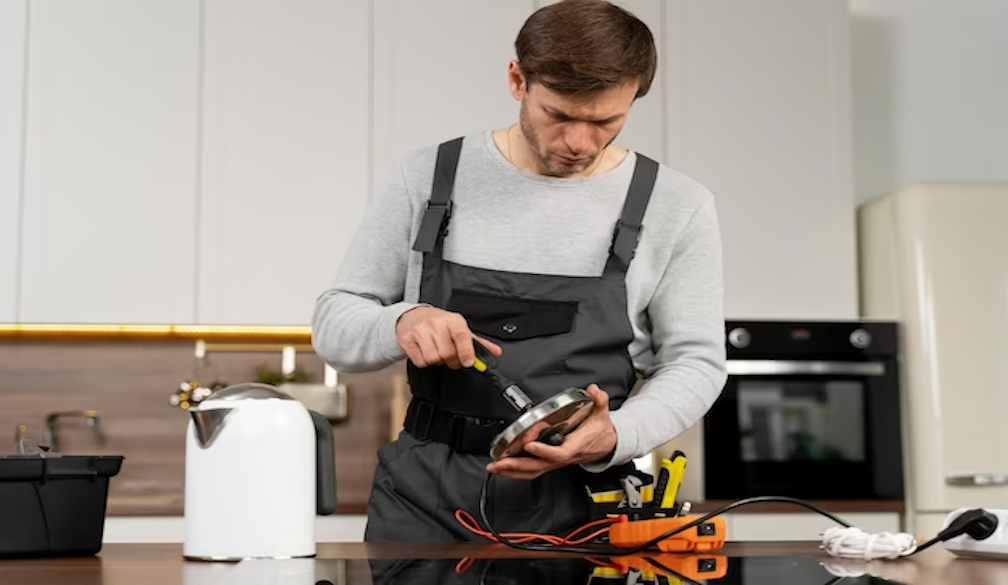A Comprehensive Guide to Electrical Repairs for a Safer Living

In our modern lives, electricity is an integral part of our homes, powering our devices, appliances, and lighting. However, with great power comes great responsibility, and electrical issues can pose serious risks.
That's why understanding electrical repairs is crucial for homeowners. In this comprehensive guide, you can find common electrical problems, safety measures, and DIY repairs, empowering you to create a safer living environment.
Section 1: Common Electrical Issues
Understanding the basics of common electrical problems is the first step in maintaining a safe home. Issues like flickering lights, tripped circuit breakers, and electrical shocks are signs that something may be amiss. We'll explore each of these issues, explaining their potential causes and implications for your home's safety.
Section 2: Importance of Timely Repairs
Delaying electrical repairs can lead to more significant problems, including electrical fires. In this section, we'll discuss the importance of addressing electrical issues promptly. We'll also explore how routine maintenance can prevent potential hazards, saving you from costly repairs down the line.
Section 3: DIY Electrical Repairs
While some electrical repairs require professional intervention, there are several tasks you can handle on your own. We'll guide you through simple DIY repairs such as replacing a damaged electrical outlet, fixing a tripped circuit breaker, and installing a new light switch. Clear, step-by-step instructions will empower you to take control of minor electrical issues without compromising safety.
Section 4: Safety Measures
Working with electricity demands strict adherence to safety protocols. This section will outline essential safety measures to follow when attempting DIY electrical repairs. From using the right tools to turning off power sources, we'll equip you with the knowledge needed to protect yourself and your home.
Section 5: Knowing When to Call a Professional
Not all electrical problems can be solved with a DIY approach. It's crucial to recognize when a situation requires the expertise of a professional electrician. We'll provide guidance on identifying complex issues and explain why some problems should be left to the experts.
Section 6: Upgrading Electrical Systems
As technology advances, so do the demands on our electrical systems. Older homes may have outdated wiring that struggles to support the load of modern devices. We'll discuss the signs that indicate it's time to upgrade your electrical system, ensuring your home is equipped to handle the demands of today's technology.
Section 7: Investing in Home Safety
Beyond repairs and upgrades, investing in home safety measures can provide an extra layer of protection. We'll explore the benefits of installing smoke detectors, surge protectors, and ground fault circuit interrupters (GFCIs). These additions not only enhance safety but also contribute to the overall well-being of your household.
Section 8: Energy Efficiency and Conservation
In addition to safety and functionality, homeowners should consider the energy efficiency of their electrical systems. This section will explore ways to make your home more energy-efficient, from choosing energy-efficient appliances to utilizing smart home technologies. By adopting eco-friendly practices, you not only reduce your environmental footprint but also cut down on energy costs.
Section 9: Regular Inspections and Maintenance
Prevention is often the best cure, and regular inspections play a crucial role in identifying potential electrical issues before they escalate. We'll discuss the importance of routine electrical inspections and provide a checklist that homeowners can follow. Simple tasks, such as tightening loose connections and checking for frayed wires, can go a long way in maintaining a safe electrical system.
Section 10: Community Resources and Support
Navigating electrical repairs can be challenging, especially for those without a background in electrical work. This section will highlight community resources and support networks available to homeowners. Local workshops, online forums, and professional advice can provide valuable insights and assistance when dealing with electrical issues.
Conclusion
Thus, electrical repairs are an essential aspect of maintaining a safe and functional home. By understanding common issues, practicing timely repairs, and knowing when to seek professional help, you can create a secure living environment for you and your family. DIY repairs can empower you, but it's equally important to recognize the limits of your expertise and prioritize safety above all else. With the right knowledge and precautions, you can navigate the world of electrical repairs confidently, ensuring a brighter and safer future for your home.
Empowering homeowners with knowledge about electrical repairs is not just about fixing problems; it's about fostering a culture of safety and responsibility. By understanding the basics of electrical systems, recognizing potential issues, and taking appropriate action, you can create a home environment that prioritizes the well-being of your family.
The journey to mastering electrical repairs begins with education and a commitment to safety. Whether you're tackling a simple DIY repair or deciding to call in a professional, each step contributes to the overall security of your home. Additionally, investing in energy efficiency and staying proactive with regular inspections ensures a home that is not only safe but also sustainable.




